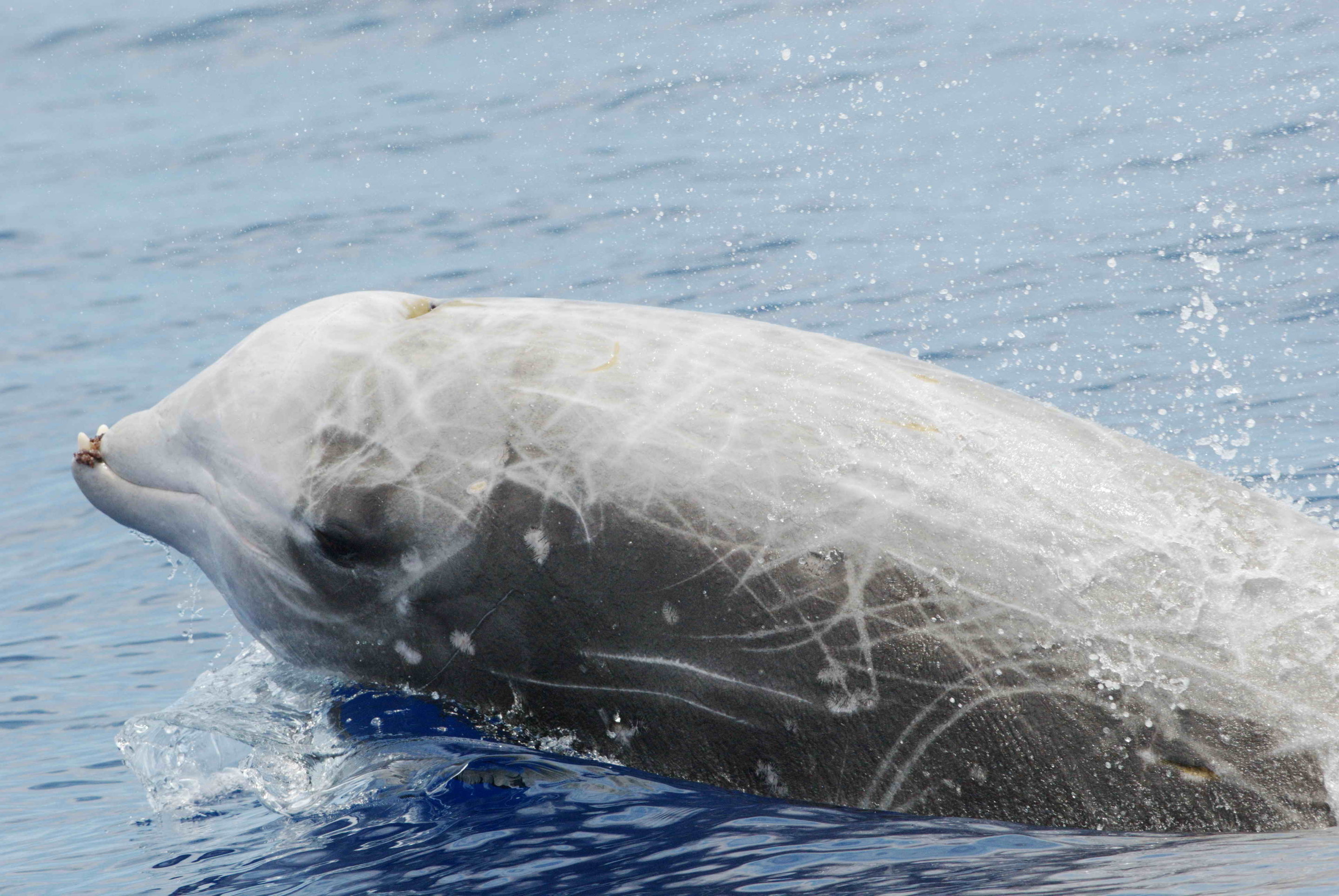Spade-Toothed Beaked Whales: Spade Toothed Beaked Whales

Spade toothed beaked whales – Spade-toothed beaked whales (Mesoplodon traversii) are a species of beaked whales found in the Southern Hemisphere. They are named for their distinctive spade-shaped teeth, which are used to crush the shells of their prey.
Spade-toothed beaked whales are closely related to other beaked whales, such as the Blainville’s beaked whale (Mesoplodon densirostris) and the True’s beaked whale (Mesoplodon mirus). They share many of the same physical characteristics, such as their long, slender bodies and their ability to dive to great depths.
Taxonomy and Evolution, Spade toothed beaked whales
Spade-toothed beaked whales are classified as follows:
- Kingdom: Animalia
- Phylum: Chordata
- Class: Mammalia
- Order: Cetacea
- Suborder: Odontoceti
- Family: Ziphiidae
- Genus: Mesoplodon
- Species: Mesoplodon traversii
Spade-toothed beaked whales are thought to have evolved from a common ancestor with other beaked whales. They diverged from this ancestor around 5 million years ago.
| Characteristic | Value |
|---|---|
| Scientific name | Mesoplodon traversii |
| Common name | Spade-toothed beaked whale |
| Length | Up to 16 feet (4.9 meters) |
| Weight | Up to 2,000 pounds (907 kilograms) |
| Diet | Squid and fish |
| Habitat | Southern Hemisphere oceans |
| Conservation status | Least Concern |
Physical Characteristics and Adaptations

Spade-toothed beaked whales are distinctive creatures with unique physical characteristics that set them apart from other whale species. They possess a streamlined, torpedo-shaped body, allowing them to navigate the depths of the ocean with ease. Their coloration is typically a dark gray or black, with a lighter underside. The most striking feature of spade-toothed beaked whales is their spade-shaped teeth, which are prominent in males and used for fighting and attracting mates.
These whales have evolved remarkable adaptations that enable them to survive in the extreme conditions of the deep sea. They possess specialized echolocation abilities, using sound waves to navigate and locate prey in the darkness. Their diving capabilities are also exceptional, with recorded dives exceeding 3,000 meters (9,800 feet). To withstand the immense pressure at such depths, spade-toothed beaked whales have flexible rib cages and collapsible lungs. Their bodies also contain a high concentration of myoglobin, a protein that stores oxygen, allowing them to stay submerged for extended periods.
Echolocation Abilities
Spade-toothed beaked whales use echolocation to navigate and find prey in the dark depths of the ocean. They emit high-pitched clicks through a specialized organ called the melon, located in their forehead. These clicks bounce off objects in the environment, creating echoes that return to the whale’s ears. By analyzing the echoes, the whale can determine the size, shape, and distance of objects around it. This remarkable ability allows them to navigate complex underwater terrain and locate prey, even in complete darkness.
Spade toothed beaked whales, with their mysterious deep-diving abilities, have captured the curiosity of scientists. But did you know that their unusual name is also connected to a controversial figure like Matt Gaetz ? Gaetz, a Republican congressman, has been in the news for various reasons.
Despite the drama, let’s return to the fascinating world of spade toothed beaked whales, known for their unique adaptations and elusive nature.
Spade toothed beaked whales, known for their unique echolocation abilities, share a common trait with the legendary tennis star Rafael Nadal : their relentless pursuit of excellence. Nadal’s unmatched determination on the court echoes the tenacity of these deep-diving whales, who navigate the ocean’s depths with unwavering focus.